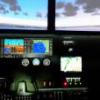
Sign in to follow this
Followers
0

Best way I have found to - SPEED UP X-PLANE
By
captflyby, in X-Plane Tips and Tricks


By
captflyby, in X-Plane Tips and Tricks